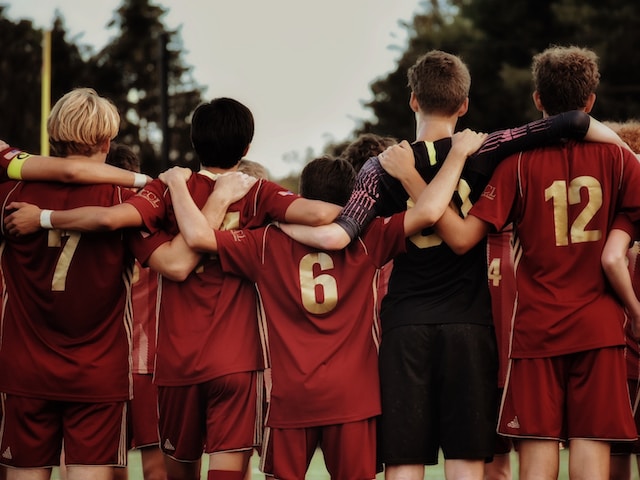“This is a sad moment right here. For all of us. And there ain’t nothing I can say, standing in front of you right now, that can take that away. But please do me this favor, will you? Lift your heads up and look around this locker room. Yeah? Look at everybody else in here. And I want you to be grateful that you’re going through this sad moment with all these other folks. Because I promise you, there is something worse out there than being sad, and that is being alone and being sad. Ain’t nobody in this room alone. Let’s be sad now. Let’s be sad together. And then we can be a gosh-darn goldfish. Onward. Forward.” -Ted Lasso
There’s sad, and then there’s alone and sad. Ted Lasso tries a few “let’s get you out of your sad” encouragements before he recognizes the futility of his efforts. Instead, he leans into the sadness and gives permission to feel it, with others. In the scene, the camera picks up rippling physiological calming throughout the players in the locker room. Connection replaces hopelessness.
We know from research that holding the hand of a loved one lessens the impact of an expected pain or shock (Coan, Schaefer, & Davidson; 2006: Lending a Hand: Social Regulation of the Neural Response to Threat). Harlow showed that a monkey will choose a fuzzy hope for connection over food. And Tronick illustrates that there’s almost nothing worse for a baby than an unresponsive face. (Tronick, Still Face Experiment).
Studies also show that loneliness and social isolation are correlated to depression, anxiety, and a number of physic¬al ailments. (Greenmail & Johnson, Current Opinion in Psychology, Feb 2022) and that social connectedness plays an important role in older adults’ well-being (Ashida & Heaney, 2008; Gardner, 2011; Haslam et al., 2008). Social connection has a positive effect on physical and mental health (Cornwell, Laumann, & Schumm, 2008) and is a “primary determinant” for youth adjustment (Guerra & Bradshaw, 2008).
What Ted Lasso knows is that strengthening the emotional, interpersonal bond can help restore emotional balance and protect his players from feeling alone in their loss and sadness. As mammals, we are wired for connectedness, and pretty much every strategy that Lasso offers as “coaching a football team” is about increasing social connection and bonding—not about soccer strategies.
How do we change this for ourselves? One good place to start is just noticing. Notice what brings you to therapy, what drives you to drink, what keeps you in anxiety, conflict, or depression. Would connection soothe this place within you? Jennifer Wright states, “In his Polyvagal Theory of Emotion (1995), Dr. Steven Porges proposes that when we enhance our connection with other people, we trigger neural circuits in our bodies that calm the heart, relax the gut, and turn off the fear response.
Being connected does take time and effort, and happens slowly, as trust is built. Start with turning toward others in your sadness or other vulnerable emotions, and test the waters to see if they can stay with you in your emotion. As sharing emotions becomes a safe experience, connection grows.

